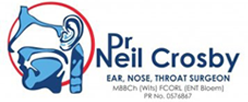Breathing difficulties can affect your ability to sleep, exercise, and even enjoy everyday life. If you have ever experienced that frustrating feeling of not being able to breathe clearly through your nose, you have come to the right place. Nasal issues such as congestion, sinus pressure, or frequent infections may stand in your way. Taking action can help restore your much needed comfort.
What are the different types of nose conditions?
- Sinusitis (Sinus Infections): They happen when inflammation or a blockage affects the air-cells (sinuses) around your nose, leading to discomfort and pressure.
- Nasal Polyps: Benign (non-harmful) growths from inflamed sinus tissue or the lining of your nose.
- Deviated Septum: The wall dividing your nasal passages may be crooked, which can lead to uneven airflow.
- Allergic Rhinitis: Commonly caused by reactions to pollen, dust, or other allergens, leading to sneezing, itching, and a runny nose.
- Non-Allergic (Rhinitis): Chronic congestion due to irritants, hormonal factors, or infections unrelated to allergies.
- Nasal Obstruction (Growths or Tumours): Unusual growths in your nose that disrupt normal breathing.
- Epistaxis (Nosebleeds): Bleeding triggered by dryness, trauma, or vascular problems.
- Snoring and Sleep Apnea: Restricted airflow during sleep that affects rest and overall health.
What nose procedures are commonly performed?
Sometimes, medication alone will not solve the problem. In such cases, surgical interventions may help:
- Endoscopic Sinus Surgery: A minimally invasive method designed to help clear out small bony partitions that may be obstructing sinus drainage. This “open-plan” strategy can significantly improve airflow, making it easier for mucus to drain effectively, and helps reduce chronic infections.
- Turbinate Reduction: Surgery to shrink or remove swollen turbinates (bony structures inside the nose that help filter air through the nasal cavity) that can clog the nasal passage.
What are the sinuses, and why do they matter?
Your sinuses are tiny air-filled cells surrounding your nasal passages. Each side of the face has three main sinuses–frontal, maxillary, and sphenoid–along with a cluster of smaller air pockets called ethmoidal cells. These small cavities have narrow openings allowing air flow and mucus to drain properly. When the lining of these passages becomes inflamed or swollen, it can block drainage, leading to sinusitis. Treatments like antibiotics, antihistamines, steroid nasal sprays, and saline rinses often help break the cycle of blockage and infection.
In some cases, chronic sinusitis doesn’t respond well to medication and may require surgery. During surgery, some of the thin internal sinus walls may be removed to create an “open-plan” effect. This can help relieve pressure, improve airflow, and make it easier for mucus to clear out naturally.
What is septoplasty?
If the septum is crooked or significantly off-centre, it may obstruct airflow and lead to mouth-breating or chronic congestion. Septoplasty aims to correct the internal wall (septum) that divides your nose into two sides, making it easier for air to pass evenly through both nostrils. While it does not directly address sinus openings, it can be performed simultaneously with sinus surgery if both conditions contribute to your breathing problems.
How do you prepare for these procedures?
We examine your nose, often with a CT scan, to locate blockages or deviations. Your doctor may also advise stopping or adjusting certain medications, such as blood thinners, before surgery. Depending on the complexity, the procedure will take one to two hours.
What happens after surgery?
When undergoing a septoplasty, you might experience a gentle packing in your nasal passages or the use of splints. This gentle packing typically includes materials like gauze or a balloon catheter, which are gently inserted into the nasal cavity to help apply pressure and control any bleeding. Dr Crosby will provide regular saline rinses to ensure your comfort during recovery. These rinses help flush away mucus and any old blood, making it easier for you to breathe and minimising crust formation.
We offer pain management, as patients often feel discomfort around the nose, teeth, or palate. Prescription or over-the-counter pain relief can help. In addition, packing and split removal usually take place a few days after surgery, so follow-up visits are essential. These allow the care team to monitor healing and advise if further measures are needed.
Long-term outlook
Sinus surgery and septoplasty each serve specific purposes. Sinus surgery aims to clear and reshape blocked sinus passages, while septoplasty corrects a crooked septum that interferes with normal airflow. You may still need occasional treatments or nasal sprays after healing, but many people find that these procedures lead to easier breathing, fewer infections, and improved quality of life.
If persistent congestion or sinus pain limits your daily activities, consider a thorough evaluation, as it is often the next step. Clear, open nasal passages can significantly enhance sleep, exercise, and overall well-being.
Contact Dr Neil Crosby so you can discuss your options and guide you through the decision-making process to focus on what matters most to you—relief, comfort, and better breathing.

